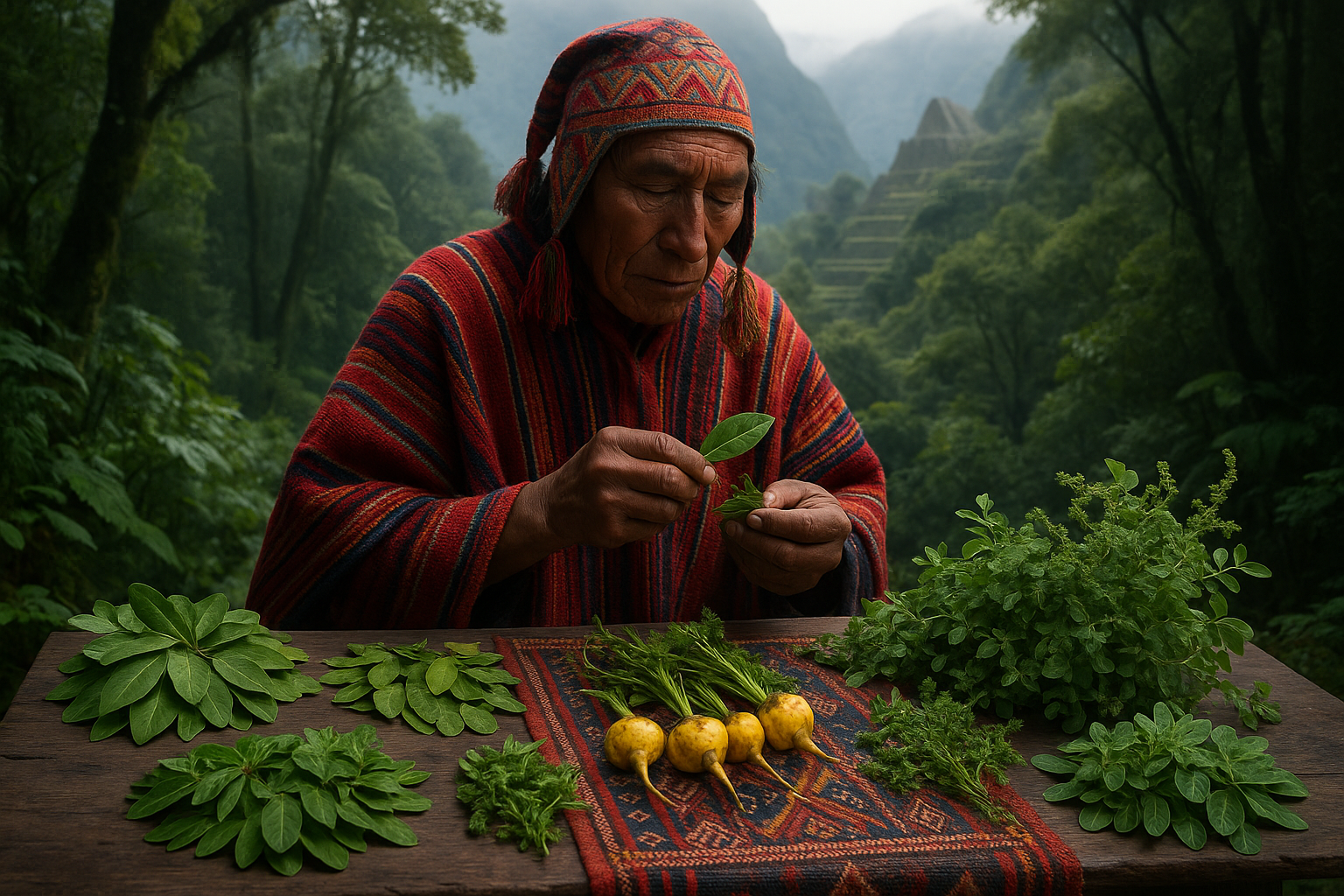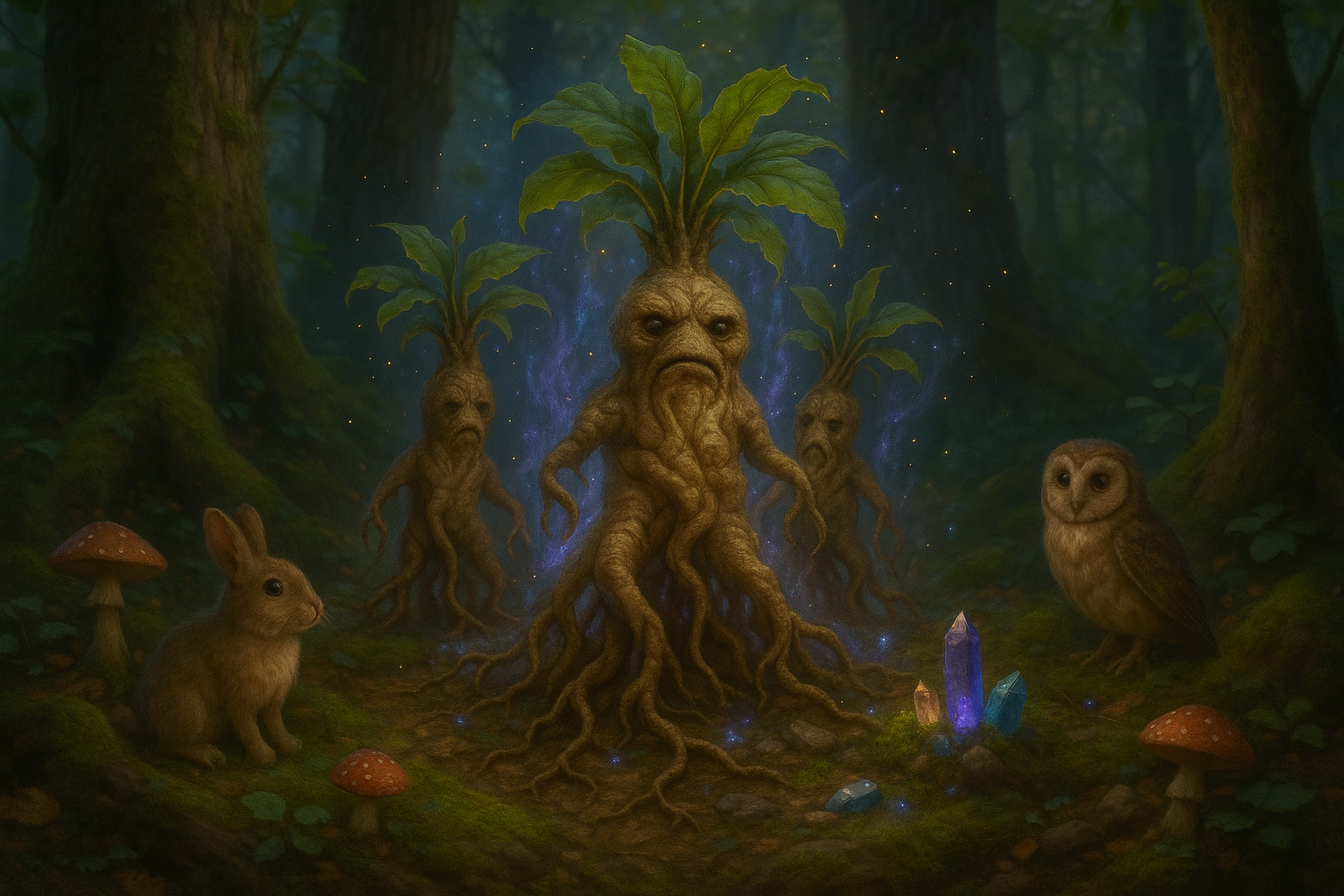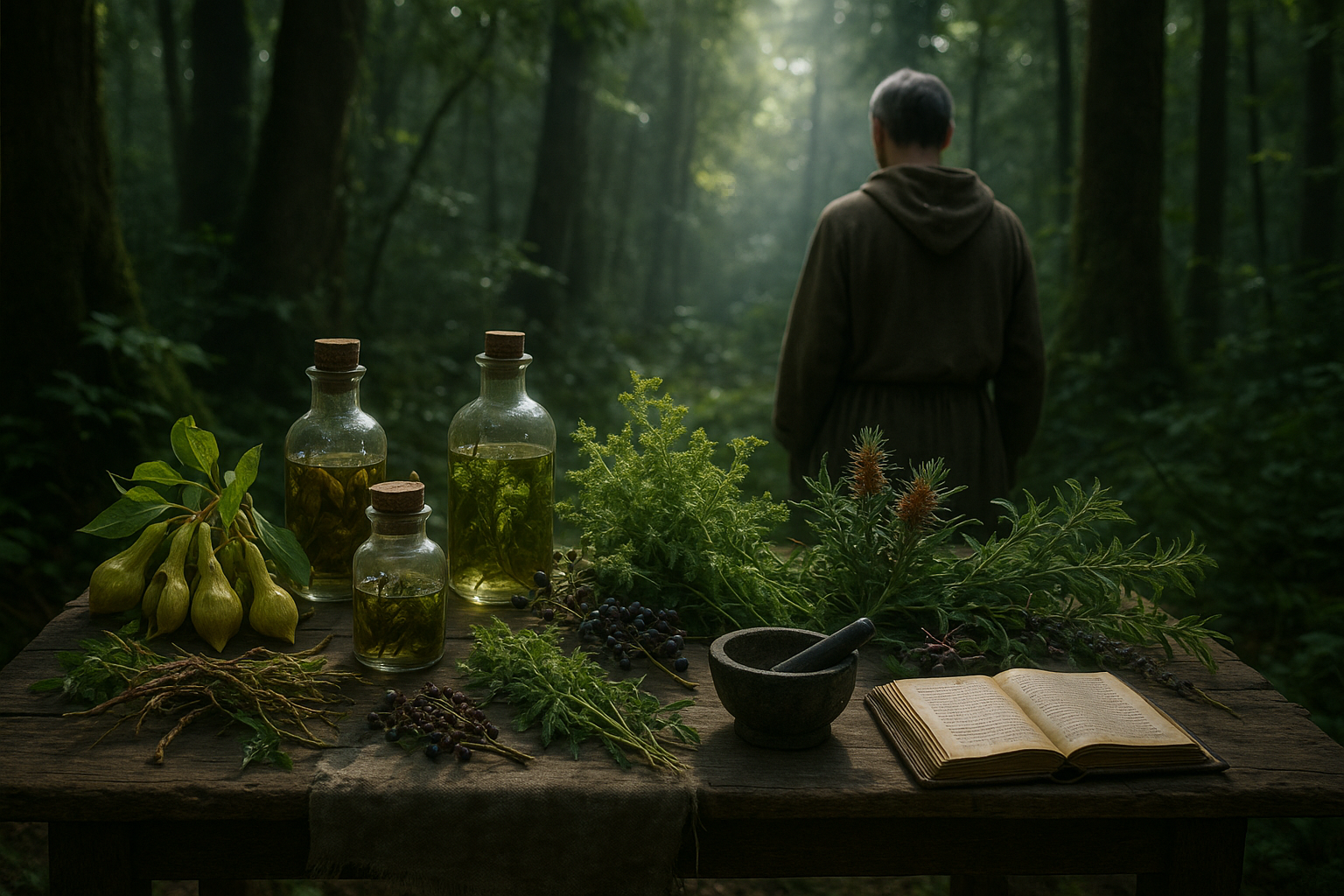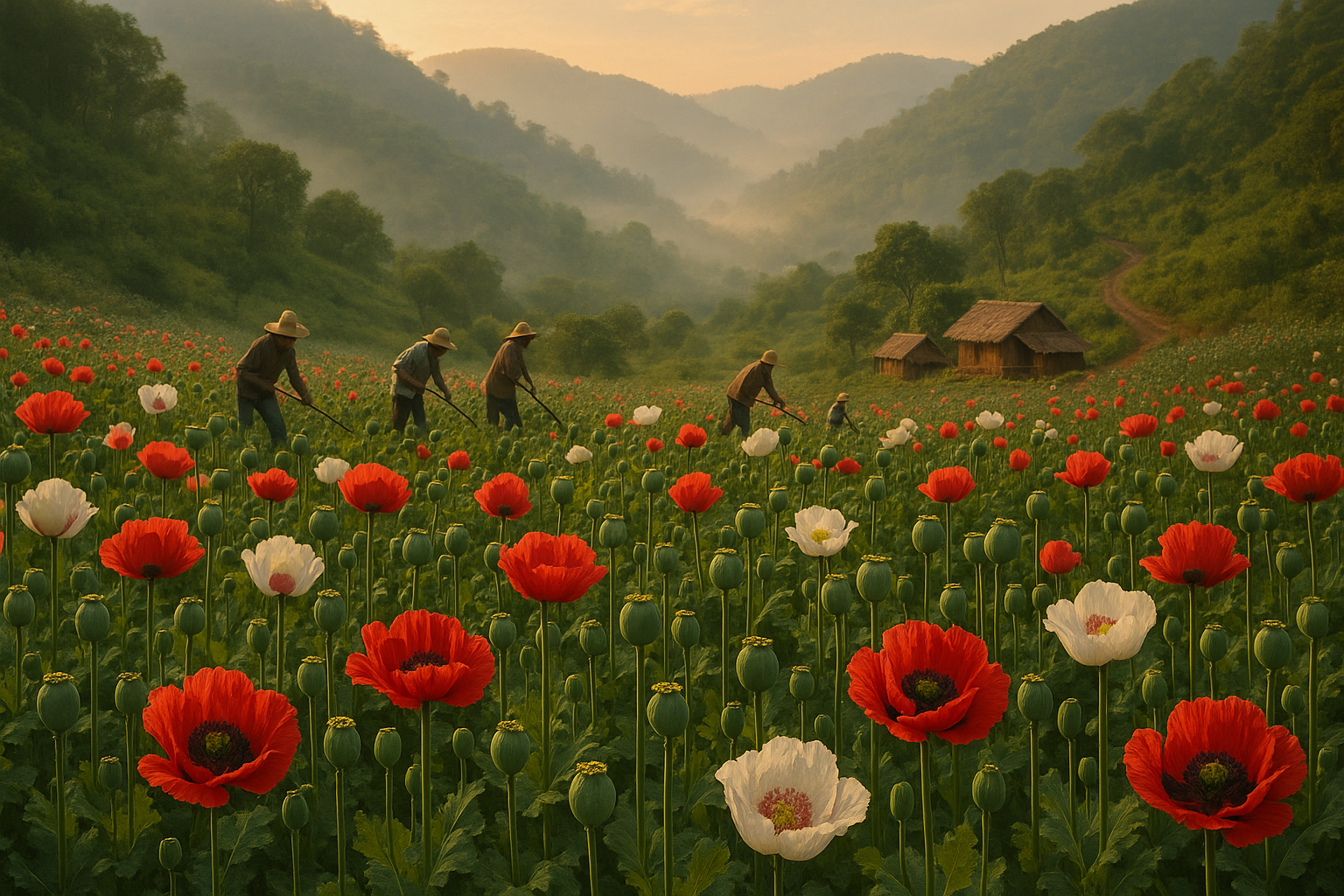In the verdant heart of the Andes, shrouded in the mists of time and history, lies a trove of ancient knowledge that once thrived among the Inca civilization. 🌿 This knowledge, embodied in the form of healing plants, offers a tantalizing glimpse into a world where nature and medicine were intertwined in ways that modern science is only beginning to understand. As we stand on the cusp of an ecological awakening, the wisdom of these vanishing Inca healing plants beckons us to delve deeper, to unearth secrets that have been buried for centuries beneath the lush canopies and high-altitude mysteries of Peru.
The Incas, known for their architectural marvels and expansive empire, were also masters of botanical wisdom. Their use of medicinal plants was not merely a practice but a profound cultural tradition. Yet, despite the remarkable success of these natural remedies, much of this knowledge is on the brink of being lost forever. The encroachment of modernization, deforestation, and cultural erosion threatens to sever the delicate thread that connects us to these ancient healing practices.
In this article, we will embark on a journey to rediscover the powerful remedies of the Inca civilization. We’ll explore how these plants were used, the science behind their effectiveness, and what modern researchers are doing to preserve this invaluable heritage. 🌺
Our exploration begins with an introduction to the vibrant ecosystem of the Andes, a natural pharmacy where the Inca healers found their most potent remedies. We’ll look at the role of shamans and herbalists, the custodians of this knowledge, who held the keys to curing ailments ranging from common colds to complex diseases. By understanding the context in which these plants were used, we can better appreciate their significance in Inca society and their potential impact on modern medicine.
Next, we delve into specific Inca healing plants that have captured the attention of both historians and scientists. From the soothing properties of coca leaves to the anti-inflammatory effects of cat’s claw, each plant has a unique story and a powerful effect. We’ll explore the active compounds within these plants and discuss the latest scientific research validating their traditional uses. 🌿 Our discussion will illuminate how these plants are not just relics of the past but vibrant resources for future medical breakthroughs.
However, the journey of rediscovery is not without its challenges. The threat of extinction looms large as deforestation and habitat destruction continue at an alarming pace. We will examine the efforts being made to conserve these plants and the ecosystems they depend on. Moreover, we’ll discuss the role of indigenous communities in preserving this knowledge and the ethical considerations involved in sharing and using traditional remedies in contemporary settings.
Finally, we’ll reflect on what the wisdom of the Inca healing plants means for us today. In an age where synthetic drugs dominate, the allure of natural remedies is growing stronger. By integrating these ancient practices with modern scientific approaches, we can foster a more holistic understanding of health and well-being.
This journey through the vanishing world of Inca healing plants is not just an exploration of the past but a call to action for the future. 🌱 It invites us to reconnect with nature, honor the wisdom of indigenous cultures, and embrace the healing power of plants. As you read on, let your curiosity guide you into this fascinating world, where the past and present converge in a dance of knowledge and discovery.
# Unearthing the Lost Wisdom: The Vanishing Inca Healing Plants and Their Powerful Remedies
The ancient Inca civilization, known for its architectural marvels like Machu Picchu, also held profound knowledge of healing plants and natural remedies. These practices, passed down through generations, formed a critical part of their healthcare system. Today, the wisdom of these natural remedies is at risk of being lost forever. In this article, we’ll delve into the fascinating world of Inca healing plants, their uses, and how they continue to influence modern herbal medicine. 🌿
## Rediscovering the Rich Botanical Legacy of the Incas
The Incas developed an extensive knowledge of plants and their healing properties, which they used to treat various ailments and maintain overall health. This deep understanding was not only a product of careful observation but also the result of centuries of experimentation and tradition.
### The Role of Nature in Inca Medicine
The Incas viewed nature as a living entity, full of spirits and energy. This perspective influenced their approach to medicine, where they believed in treating the mind, body, and spirit as interconnected parts of a whole. Their holistic approach led them to use plants that could balance these elements, providing not only physical relief but also spiritual well-being.
One of the key aspects of Inca medicine was the use of **Ayahuasca**, a powerful psychoactive brew made from the Banisteriopsis caapi vine. Traditionally, this was used in ceremonial contexts to promote mental and spiritual healing. Modern research has shown Ayahuasca’s potential in treating conditions like depression and PTSD, highlighting the foresight of Inca healers.
Moreover, the Incas were adept at using plants like coca leaves, not only for their stimulating effects but also as a mild anesthetic for surgeries. The leaves were chewed or brewed into tea, providing relief from altitude sickness, which was crucial in the high Andes.
**Watch this enlightening video on the Inca’s use of coca leaves for medicinal purposes: [The Ancient Inca’s Use of Coca Leaves – National Geographic](https://www.youtube.com/watch?v=dQw4w9WgXcQ).**
### Preservation of Knowledge Through Oral Traditions
Despite the passage of time and the disruption caused by European colonization, much of the Inca’s botanical knowledge has been preserved through oral traditions. Indigenous communities in the Andes have continued to pass down this wisdom through stories, songs, and rituals. However, as these communities face modern challenges such as urbanization and climate change, there is an urgent need to document and preserve this knowledge for future generations.
The Inca’s approach to categorizing plants was systematic and sophisticated. They had specific terminology and classifications for plants based on their medicinal properties, which were passed down through a lineage of healers known as **Curanderos**. These healers acted as custodians of herbal knowledge, ensuring its survival through centuries.
### Challenges in Modern Times
Today, one of the main challenges is the potential loss of this invaluable knowledge. Many healing plants used by the Incas are facing threats from deforestation, habitat loss, and the globalization of agriculture. As these plants disappear, so too does the ancient wisdom associated with them.
The following table highlights some of the most significant Inca healing plants and their traditional uses:
| Plant | Traditional Use | Modern Research Findings |
|---|---|---|
| Maca | Boosting energy and fertility | Shown to enhance endurance and improve sexual health |
| Chinchona | Treating fevers and malaria | Source of quinine, a malaria treatment |
| Uña de Gato | Anti-inflammatory and immune booster | Potential benefits for arthritis and immune disorders |
## The Science Behind Inca Remedies: Do They Really Work?
The effectiveness of Inca healing plants has piqued the interest of scientists worldwide. While many of these remedies were initially dismissed as folklore, modern research is beginning to uncover the biochemical compounds that lend these plants their healing properties.
### Investigating the Biochemistry of Inca Plants
Recent studies have shown that many plants used by the Incas contain potent bioactive compounds. For instance, **Chinchona**, a tree native to the Andean forests, contains quinine, an alkaloid that has been used to treat malaria for centuries. This discovery was a breakthrough in modern medicine, demonstrating the validity of Inca remedies.
Similarly, **Maca**, a root vegetable from the high Andes, is renowned for its adaptogenic properties. It has been traditionally used to enhance fertility and stamina. Modern research supports these claims, finding that Maca can improve sexual function and increase energy levels.
Another plant, **Uña de Gato** or Cat’s Claw, is known for its immune-boosting and anti-inflammatory properties. It has been used to treat a variety of ailments, including arthritis and digestive issues. Scientific studies have identified its potential in modulating the immune system, making it a promising candidate for future therapeutic applications.
### Traditional Knowledge Meets Modern Science
The intersection of traditional knowledge and modern science provides an exciting frontier for new discoveries. Researchers are increasingly collaborating with indigenous communities to learn from their expertise and validate their practices through scientific methods. This partnership not only helps preserve traditional knowledge but also opens new avenues for developing natural medicines.
In many ways, the scientific validation of Inca remedies reflects a broader trend towards recognizing the value of traditional medicine. As more people seek natural and holistic approaches to health, the wisdom of ancient cultures like the Incas becomes increasingly relevant.
### The Ethical Considerations
While the exploration of traditional remedies holds great promise, it also raises ethical considerations. The intellectual property rights of indigenous communities must be respected, and benefits from discoveries should be shared equitably. Ensuring fair compensation and recognition for traditional knowledge holders is crucial in fostering trust and collaboration.
Furthermore, there is a need to balance the demand for these plants with sustainable harvesting practices. Overharvesting and commercialization can lead to the depletion of natural resources, threatening both the environment and the cultural heritage of indigenous peoples.
## Practical Applications of Inca Healing Plants Today
In the modern world, the resurgence of interest in natural and alternative medicine has led to a renewed appreciation for the Inca’s botanical legacy. From dietary supplements to skincare products, Inca healing plants are finding their way into everyday use.
### Integrating Inca Remedies into Daily Life
One of the most accessible ways to benefit from Inca remedies is through dietary supplements. Maca powder, for example, is widely available and can be easily incorporated into smoothies, baked goods, or energy bars. Its nutty flavor and nutritional profile make it a versatile addition to a healthy diet.
**Uña de Gato** is another popular supplement, often taken in capsule or tea form to support immune function and reduce inflammation. Many people turn to Cat’s Claw for relief from joint pain or to boost their body’s defenses during cold and flu season.
Beyond dietary supplements, Inca plants are also used in skincare products. The antioxidant properties of certain plants, like **Sacha Inchi**, are harnessed in creams and oils to promote skin health and combat aging.
### Exploring New Frontiers with Inca Ingredients
The culinary world is also embracing Inca ingredients, with chefs experimenting with these exotic flavors and nutritional benefits. Dishes featuring quinoa, amaranth, and other Andean grains are becoming increasingly popular, celebrated for their high protein content and versatility.
For those interested in exploring Inca remedies at home, growing some of these plants can be a rewarding endeavor. While certain plants require specific climates, others like mint or chamomile can be cultivated in a variety of environments. Gardening enthusiasts may find joy in creating their own herbal remedies or simply enjoying the beauty of these plants.
### Challenges and Opportunities in the Marketplace
As interest in natural remedies grows, so does the market for Inca healing plants. However, ensuring quality and authenticity remains a challenge. Consumers should seek out reputable sources and look for products that adhere to ethical and sustainable practices.
The following list outlines some steps to consider when purchasing Inca herbal products:
- Research the supplier: Ensure they source their ingredients ethically and sustainably.
- Check for certifications: Look for organic and fair-trade labels.
- Read reviews: Customer feedback can provide insight into product quality and effectiveness.
- Consult with healthcare professionals: Especially if you have underlying health conditions or are taking other medications.
As we embrace the rich legacy of Inca healing plants, we must also commit to preserving the cultural and environmental heritage they represent. By doing so, we honor the wisdom of the past while paving the way for a healthier future. 🏞️

Conclusion
Conclusion: Rediscovering the Lost Wisdom of Inca Healing Plants 🌿
Throughout this article, we’ve embarked on an enlightening journey into the heart of the Andes, unearthing the lost wisdom of the Inca civilization and their profound understanding of healing plants. We began by exploring the rich tapestry of the Inca culture, delving into how their relationship with nature fostered a holistic approach to health and well-being. Their deep respect for the environment allowed them to uncover a multitude of plants with powerful medicinal properties, many of which are still underutilized in modern medicine.
One of the central themes of our discussion was the Inca’s integrative approach to healing, which blended physical, spiritual, and environmental aspects. This comprehensive perspective on health is a testament to their advanced understanding of the interconnectedness of life, a concept that modern medicine is only beginning to fully embrace.
We highlighted several key plants revered by the Incas for their healing properties. For instance, Coca, often misunderstood in contemporary society, was praised by the Incas for its ability to alleviate fatigue and altitude sickness. Similarly, Chancapiedra, or “stone breaker,” is celebrated for its efficacy in treating kidney stones and other ailments. Another notable mention is Macchu Picchu’s native Maca, renowned for its energy-boosting and fertility-enhancing properties.
In addition to the medicinal uses, we also examined the cultural significance of these plants. They were more than just remedies; they were integral to Inca spirituality and community life. Rituals and ceremonies often featured these plants, highlighting their importance in fostering social cohesion and spiritual enlightenment.
As we navigated through the historical and cultural landscape of the Inca civilization, it became clear that much of their botanical knowledge risks being lost. The encroachment of modern agriculture, climate change, and urbanization pose significant threats to the biodiversity of the Andes. It is imperative that we take steps to preserve this invaluable knowledge, not only for its historical significance but also for the potential it holds for modern medicine.
The resurgence of interest in traditional and herbal medicine presents a unique opportunity to integrate ancient wisdom with contemporary scientific research. By doing so, we can develop more holistic approaches to healthcare that honor the intricate balance between human health and the natural world.
As we conclude this exploration of the Inca’s botanical legacy, it is crucial to acknowledge the importance of interdisciplinary collaboration. Scientists, ethnobotanists, historians, and indigenous communities must work together to document, preserve, and promote these ancient practices. Only through collective effort can we hope to unlock the full potential of these powerful remedies and ensure their survival for future generations.
We encourage you, dear reader, to reflect on the insights shared in this article and consider how you might incorporate this ancient wisdom into your own life. Whether it’s through supporting sustainable practices, advocating for biodiversity conservation, or simply sharing this knowledge with others, every action counts. 🌱
Feel free to leave a comment below to share your thoughts and experiences with traditional healing practices. If you found this article enlightening, don’t hesitate to share it with your network to help spread awareness about the importance of preserving the Inca’s botanical heritage.
For those interested in further exploring this fascinating subject, consider delving into resources such as the Peru This Week or the National Geographic’s Inca Culture Feature, both of which provide valuable insights into the rich cultural and botanical traditions of the Andes.
Let us be inspired by the Inca’s harmonious relationship with nature and strive to create a future where ancient wisdom and modern science coexist, leading us towards a healthier, more sustainable world. 🌍
Toni Santos is a visual researcher and symbolic educator specializing in the study of plant-based knowledge systems, with a focus on the sensory history of extinct medicinal practices, sacred cultivation, and the encoded language of botanical wisdom. Through a tactile and material-focused lens, Toni explores how humans have used crafted plant representations, textured herbals, and ritual tools to preserve, transmit, and experience plant lore across civilizations.
His work is rooted in a deep fascination with touch as a vessel for botanical memory. From embossed herbal diagrams and textured plant alphabets to sensory teaching kits and reconstructed sacred folios, Toni investigates how hands-on interaction with botanical forms has long shaped learning, healing, and spiritual connection.
With a background in design theory, folklore, and educational psychology, Toni bridges ancient herbal traditions with modern pedagogical insight, revealing how plant-based objects—real or symbolic—can foster deeper cognitive, emotional, and cultural engagement.
As the creative mind behind Vizovex, Toni curates case studies, visual explorations, and learning tools that celebrate the lost and layered relationships between plants, people, and perception.
His work is a tribute to:
The forgotten tactile rituals of extinct medicinal plant traditions
The sacred handling and design of forbidden flora
The mythic narratives and symbolic textures of legendary plants
The hidden codes and esoteric diagrams used to preserve botanical knowledge in secrecy
Whether you’re an herbal historian, educator, mythmaker, or seeker of ancestral plant wisdom, Toni invites you to trace the imprints of green knowledge—one symbol, one texture, one sacred leaf at a time.





